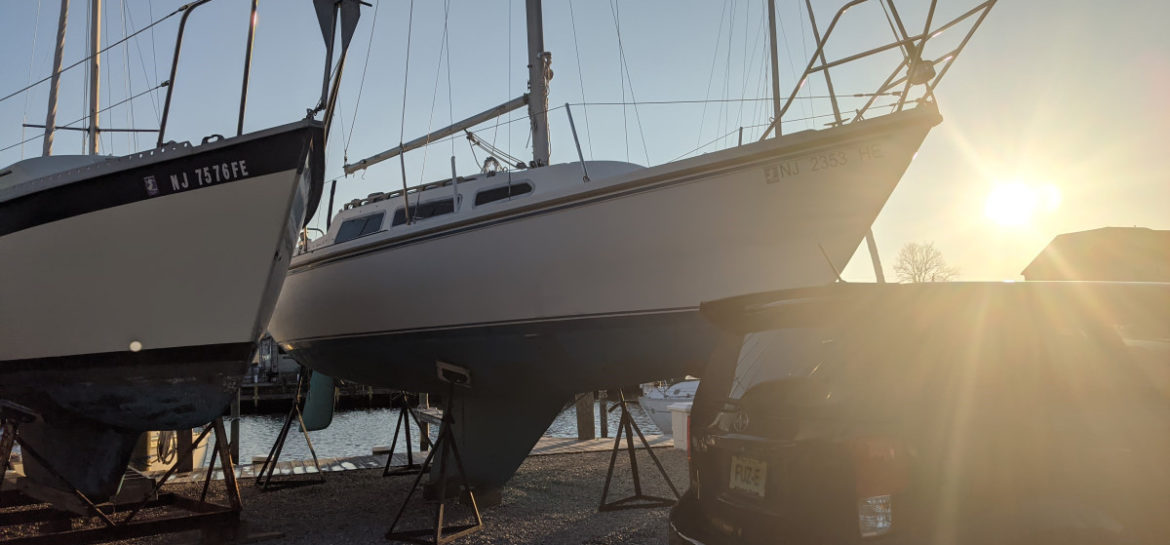
Fortuitous is officially on the hard for the season. She’s been pulled from the water and has been propped on stands in the marina. Jenn and I went down to start the winterization process.
Step 1 is to find the boat. One might that imagine that that there’s an implicit Step 0 of preparing the things that you need to bring, waking up at an appropriate time, then traveling to the shore early enough to have ample daylight to accomplish the winterization tasks, but you know what they say about “implicit”: it makes an imp out of licit? When it comes to boating, my style is more to roll in at the crack of 1:30 and then declare, “Oh, I forgot everything.”
But Step 1: find the boat. There’s always a little twinge of anticipation as I approach the marina after the boat has been pulled, especially when I’m among die-hards (or stragglers, from the marina’s point of view) who have extended the season to the edge of reason. Will I be with the cool kids? Will I be in the weird corner of the lot with the derelicts? Will I be close enough to water and power that I don’t need to commandeer and string together seven extension cords and hoses? Will the water even be turned on, since it’s mid-November and there are definitely freezing temperatures in the forecast? As it turned out, I got a great spot on (what I consider) the preferred side of the yard, and she was not difficult to locate.
Step 2: top off the diesel tank. One of the things I did remember to bring was a can of fuel. I climbed up onto the boat without thinking about it too hard, which is convenient because a thinking person would think “Damn, that’s way too high off the ground.” The main sheet was still in place, so I disconnected it from the traveler, swung the boom out over the side of the boat, and tossed the block down to Jenn, who was still on the earth, to tie to the diesel can. I then used the 4:1 purchase of the sheet to lift the can and used the boom and topping lift as a crane to swing it into the cockpit. Was this necessary? No, but I don’t often get to play freighter, and it was fun. I was then able to fill it up to limit the amount of air (and, therefore, moisture) in the tank over the winter. Total cost of fuel in 2020: ~$17. That’s actually more than I would have anticipated, but would still account for only about 12 minutes of operating one of those 140dB “notice me” speedboats, so I’m fine with it.
Step 3: winterize the fresh water system. I siphoned the water out of the fresh water tank through the garboard drain in the bilge and pumped the sinks dry. I put some propylene glycol antifreeze in the tank and pumped that through until the sinks ran pink.
Step 4: heat exchanger winterization. The last step that I was capable of performing with the materials at hand (and the only remaining one that was absolutely necessary before the temperature dropped below 32°F) was to flush the raw water cooling system of the engine with fresh water and fill it with antifreeze. This really requires two people: one to operate the engine from the cockpit and one to be down by the intake with a bucket, hose, and jug of the pink stuff. Jenn hurt her knee, and despite a valiant effort, was unable to climb aboard the boat, so I enlisted Richard to work the engine controls while I manned the bucket. I’ve kind of got this down to a science, and it went smoothly. Thanks Richard.
I didn’t take any photos of any of this, so here’s a picture of a forklift.
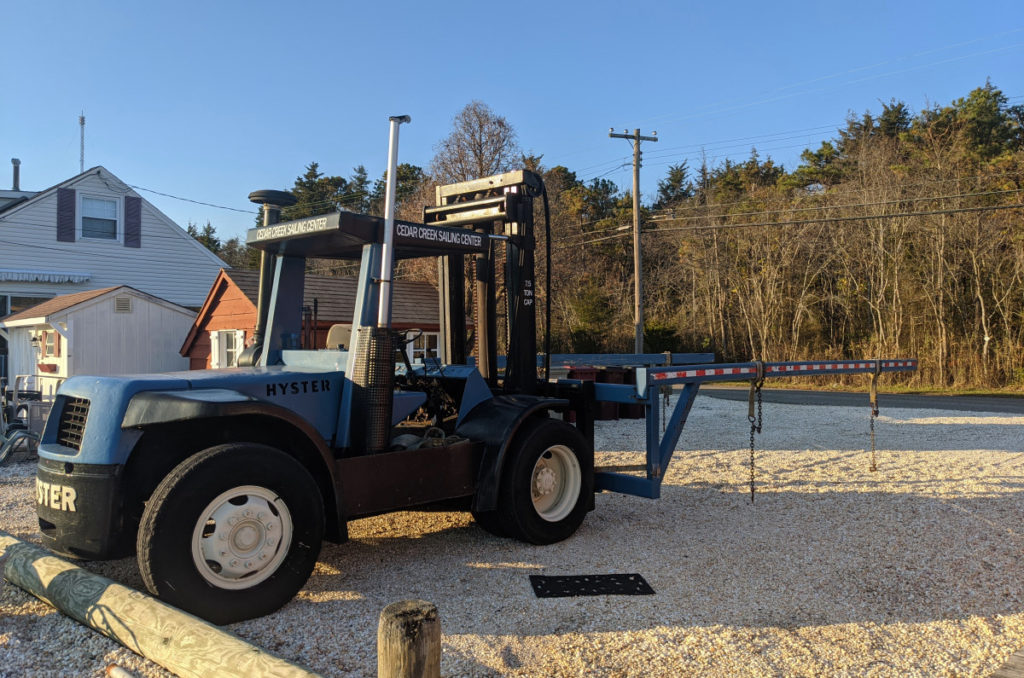
When I spent the majority of an eternity scraping, sanding and repainting the bottom of the 22 in 2012, I remember being extremely impressed by the forklift that my previous marina used to temporarily lift the boat so that I could paint under the trailer bunks. I had no idea at that time that forklifts could be so much more brawny. I’m pretty sure that this forklift could fork more lifts than four of those forklifts could fork.
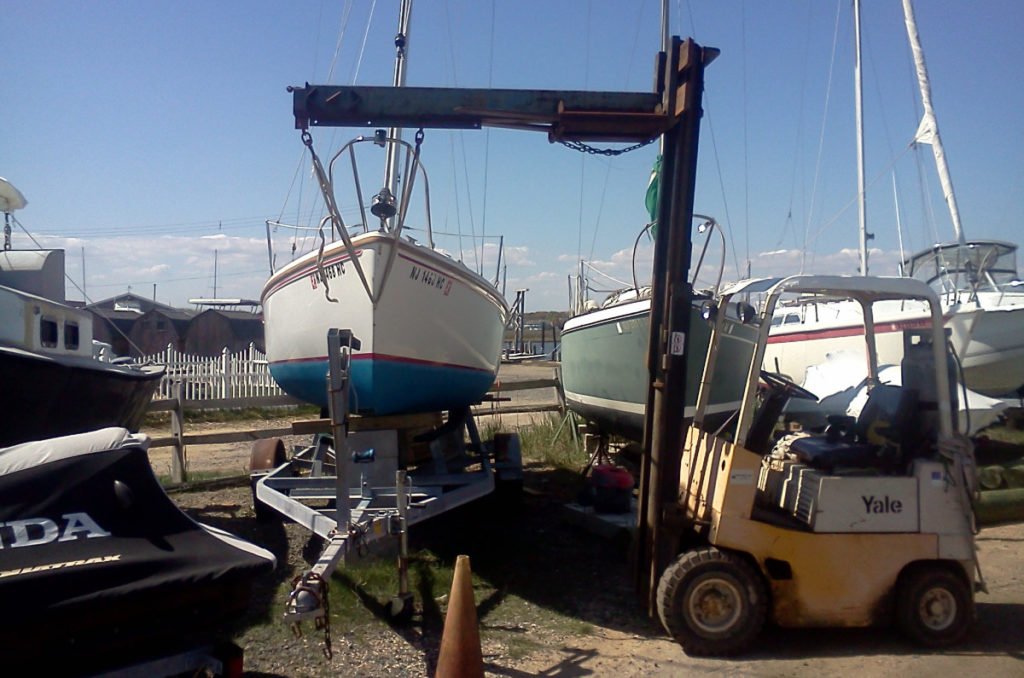
Also, telephone cameras have apparently gotten much better since 2012.
“On the hard” definitely refers to a boat that has been intentionally placed on land, but that is the closest I’m going to get to a segue for this non sequitur. In the interest of bringing my readers interesting and exclusive* content, I’ve been trying to figure out what happened to a sailboat that has been sitting on the bottom of the inlet for several days.
*Note: may not be interesting or exclusive
I was sent a text with this photo:
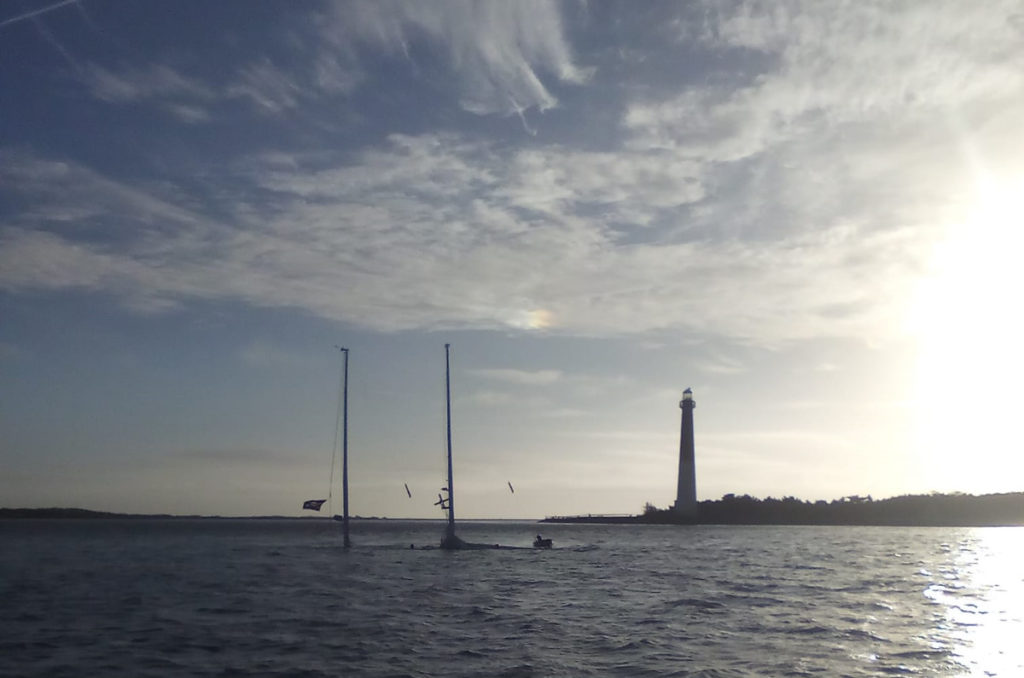
(quotes added in the hope that this is a nickname)
I tracked the picture down to a Facebook group of local fisherman, taken around November 11. Most of what I know about this is from them—I can’t find any news on it anywhere, nor is it in the USCG Local Notice to Mariners. It certainly looked like a schooner (or something) sank just inside Barnegat Inlet.
Along with clumsily-worded barbs about sailors, fishermen seem to always have a camera at the ready. Another fisherman in the group had taken a photo earlier that day of an unusual sailboat:
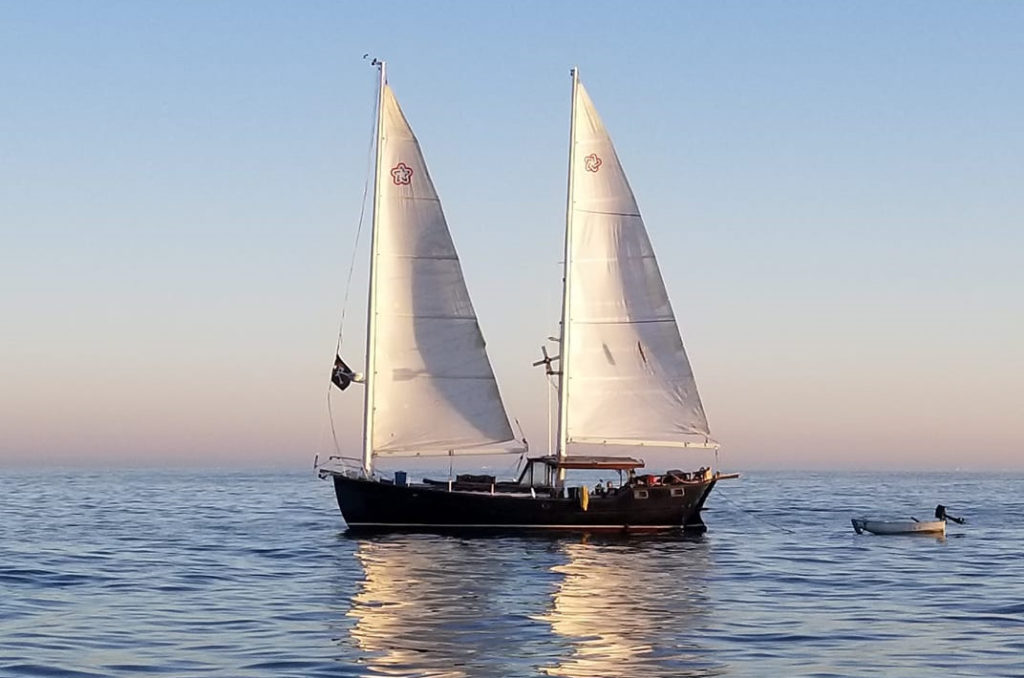
The twin masts, the pirate flag [of course], and that weird dutch windmill-looking thing all indicated that this must have been the same boat, which is not a schooner…it’s a Freedom 40 cat ketch. I was unaware that Freedom made a boat with such a prominent poop deck, but it checks out.
I showed this to some sailing friends, and one of them immediately found this listing, which also seems to be the same boat: https://www.sailboatlistings.com/photographs/74583. It may have been a recent purchase, sailing south from New York.
The fishermen continued to post updates as recovery operations proceeded:

I can’t imagine that it’s the apex of marine salvage technology to drive a dirt-moving machine onto the end of a rusty barge and drag it out there with a clinically depressed tugboat from a Thomas the Tank Engine B-story, but here we are. Apparently, it was sufficient, because on Sunday, the fishin’ report was that it was being towed into Forked River on air bags with pumps running:
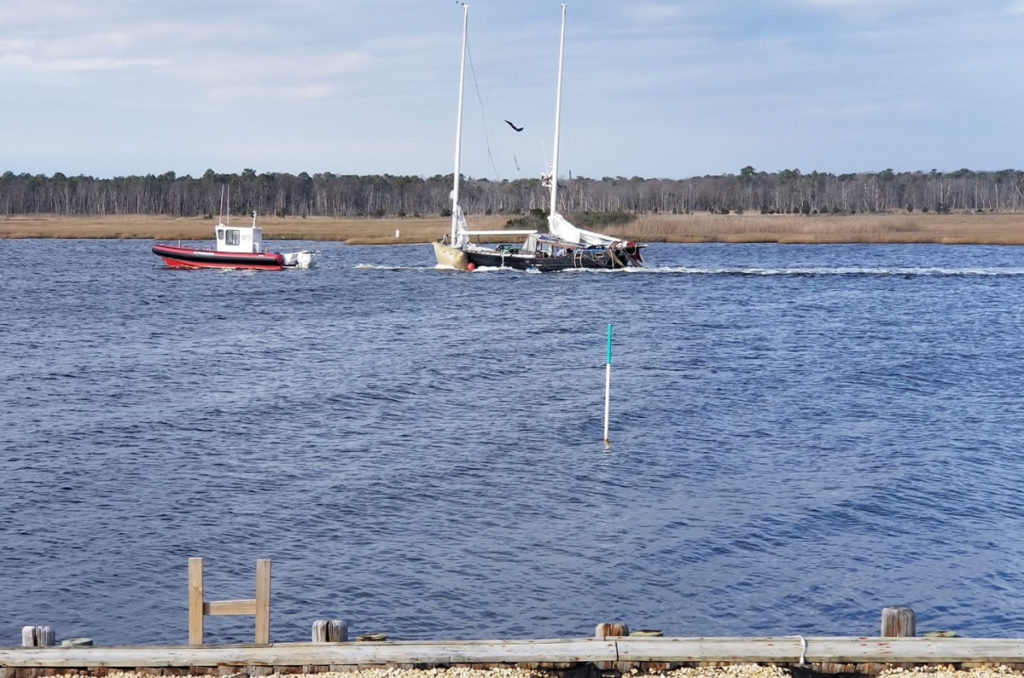
I still don’t know what happened, but I hope everyone involved is okay and that the boat can be repaired. Thanks for the reporting, Barnegat Bay Fishing Report.
As for Fortuitous, I still have some maintenance tasks and need to get the cover on, but she’s not going anywhere. At least we took care of the stuff that needed to be taken care of before the liquid water turns hard.
Chip,
Reading your blogs always brings a smile to my face – several, in fact. And I often learn something new! Just wanted to let you know I appreciate your efforts.
Thanks, Steve. I appreciate the encouragement.